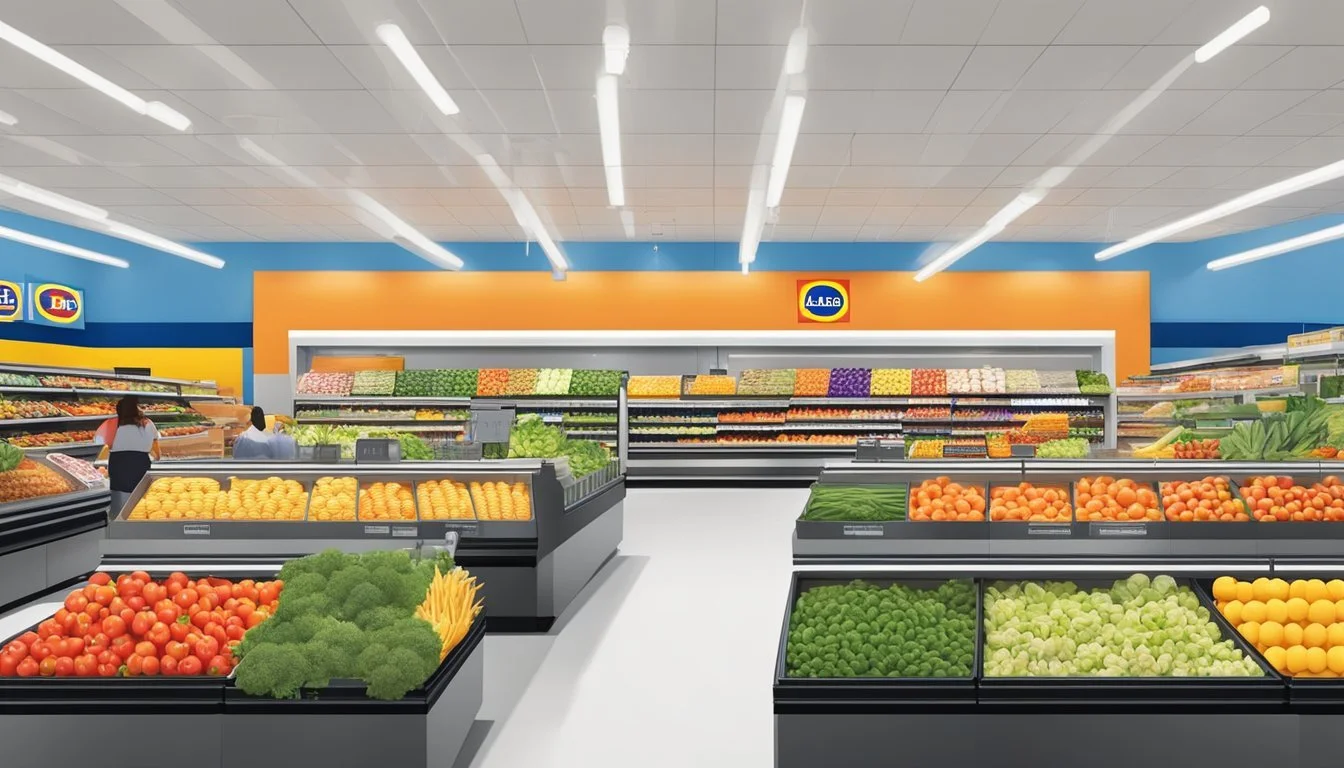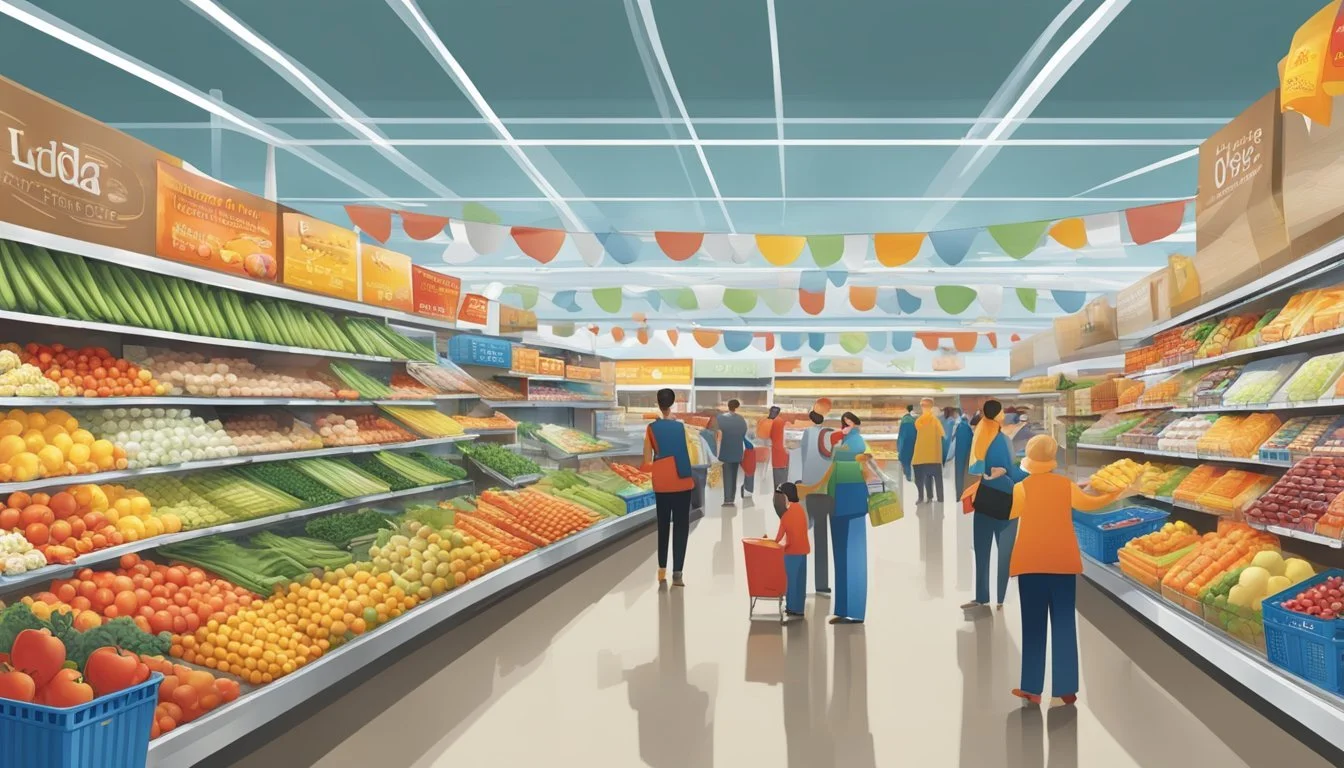Lidl vs Hy-Vee
Comparison Evaluating Grocery Store Excellence
Choosing the right grocery store can significantly impact one's shopping experience, budget, and satisfaction with the products purchased. Supermarkets like Lidl and Hy-Vee offer distinct shopping atmospheres, product selections, and price points, each aiming to provide value to customers in their unique ways. Lidl, known for its European roots and discount pricing, has established itself as a cost-effective solution with a straightforward store layout prioritizing their own private labels. On the other hand, Hy-Vee, with its focus on the Midwestern United States, is recognized for its extensive service offerings and a wider range of national and regional brands.
Shoppers often compare Lidl and Hy-Vee to understand which store better caters to their needs. Lidl's approach to offering a smaller selection of items, mainly house brands, allows it to provide goods often at lower prices, which appeals to bargain hunters and those who prioritize savings over brand variety. In contrast, Hy-Vee is celebrated for its customer service, specialty departments like bakeries and delis, and a commitment to community involvement, aspects which resonate with shoppers seeking a full-service supermarket with diverse options.
As customers weigh their options, they contemplate factors such as the convenience of location, quality of products, the variety offered, and the overall shopping experience. This comparison sheds light on how Lidl and Hy-Vee stand in key areas that influence consumer decisions in grocery shopping, aiming to give consumers the insights needed to choose the grocery store that best aligns with their shopping preferences and lifestyle.
Company Overviews
When comparing supermarkets Lidl and Hy-Vee, understanding their histories sheds light on their approaches to serving customers. Each chain has carved out a significant presence in the grocery industry, each with a unique background.
History of Lidl
Lidl began in 1973 as a European grocery chain with a focus on discount prices, famously competing with another discount grocer, Aldi. The founder's vision for affordable groceries has propelled Lidl to international success. It expanded into the U.S. market as Lidl U.S., opening its first store in 2017. As of now, Lidl operates over 159 stores across 22 states, offering customers an array of products, including a European-style fresh food market and private labels that often rival national brands in quality and price.
History of Hy-Vee
Hy-Vee Inc. traces its origins to a small general store in Beaconsfield, Iowa, in 1930. The founders emphasized customer service and employee ownership as core values. With its customer-centric approach, Hy-Vee grew steadily to become a well-respected supermarket chain in the Midwest. Today, the company boasts approximately 275 stores in eight Midwestern states. Hy-Vee distinguishes itself through its wide selection of products, full-service offerings, and commitment to the communities it serves.
Store Offerings
Lidl and Hy-Vee supermarkets offer distinct shopping experiences, characterized by their diverse product selections and commitment to quality.
Product Selection
Both Lidl and Hy-Vee provide a wide range of products, catering to the everyday needs of their customers. Lidl is known for its well-organized aisles with a selection that includes international foods, catering to diverse culinary tastes. Hy-Vee, on the other hand, offers a broader range of products that extends beyond groceries to include pharmacy, wellness, and general merchandise.
Freshness and Quality
Freshness and quality are hallmarks of both Lidl and Hy-Vee offerings, especially when it comes to produce and meat. Lidl's commitment to freshness can be seen in their regularly stocked fruit and vegetable aisles. Hy-Vee emphasizes quality and freshness, particularly in its meat department, where they often feature a variety of cuts and types, including specialty meats.
Organic and Store Brands
Both grocery chains feature a robust selection of organic products. Lidl's line, Preferred Selection, includes high-quality, affordable organics and store brand items. Hy-Vee responds with its own array of organic options, including both national and store brands, providing choices for health-conscious shoppers.
Specialty Departments
Customers frequent Lidl for its in-house bakery, delivering freshly baked breads and croissants daily. Hy-Vee counters with not only a bakery but also a selection of cheeses, a deli for custom meats, and a specialty kitchen area that offers freshly prepared meals. Their focus on snacks, like tortilla chips and salsa, ensures a variety of choices for the customer aiming for both taste and convenience.
Shoppers at Lidl and Hy-Vee can expect to find fresh, quality ingredients along with an array of organic and store brand products. Each store delivers a unique experience whether through a wide product selection or specialty goods and services.
Pricing and Value
When comparing Lidl and Hy-Vee, consumers often take into account pricing strategies and the value offered by each store. Both are recognized for their competitive prices but offer different incentives and saving opportunities.
Comparison of Prices
Lidl, a well-known discount grocer, often features lower price tags on a range of products. Its prices on basics like bread and produce tend to undercut competitors, aligning with its European roots as a store offering good value for money.
Hy-Vee, while not always as low-priced as Lidl, strives to provide a balance of value with a wider selection. Shoppers at Hy-Vee may observe that its pricing on national brand equivalents remains competitive, though some specialty items might carry a premium.
Sales and Discounts
Both Lidl and Hy-Vee offer a variety of sales and discounts, which can significantly lower the grocery bill.
Lidl has weekly specials and frequently offers deep discounts on select items.
Hy-Vee is known for its fuel saver program, digital coupons, and the Hy-Vee Plus premium membership, which provides exclusive deals and discounts.
Affordability of Basics
When it comes to staples like milk, eggs, and bread, price-conscious shoppers often lean towards Lidl for its consistently low prices. It's not uncommon for customers to save on basics, which is especially appealing for a family looking to stretch their grocery budget.
In contrast, Hy-Vee offers competitive prices on a broader range of goods and may feature lower sale prices or discounts through coupons. This may include specials on higher-end items like roses and organic products, akin to those found at Whole Foods or Market Basket.
Shopping Experience
When comparing Lidl and Hy-Vee, one must consider the facets of customer service, store layout and navigation, and checkout efficiency to understand the shopping experience each store offers.
Customer Service
At Lidl, customers can expect a straightforward approach with less emphasis on staff interaction, aligning with its cost-saving business model. In contrast, Hy-Vee is known for providing a more personalized service, with employees often going out of their way to aid shoppers.
Store Layout and Navigation
Lidl stores typically feature a minimalist layout with a smaller selection of goods, mostly consisting of store brands, which simplifies the navigation process for customers. Hy-Vee stores offer a more traditional supermarket layout, with a wider variety of national and store brands but may require more time to shop due to larger store sizes.
Lidl:
Simple, easy-to-navigate aisles.
European-style layout with a focus on store brands.
Hy-Vee:
Traditional supermarket design.
Broad brand selection, potentially leading to longer shopping trips.
Checkout Efficiency
Lidl offers a quick checkout experience with a focus on self-service, catering to customers who prioritize efficiency. Hy-Vee provides multiple checkout options, including staffed lanes for a more traditional checkout experience that some customers might find preferable. Both stores have implemented measures to streamline the checkout process, ensuring that the final step of the shopping experience is as smooth as possible.
Lidl:
Efficient, mostly self-service lanes.
Designed for speedy transactions.
Hy-Vee:
Variety of checkout options including self-service and staffed lanes.
Emphasis on customer convenience at checkout.
Market Presence and Growth
As Lidl and Hy-Vee expand their operations, their influence on the grocery market evolves. The growth of these retailers is marked not only by an increase in store count but also by the strategic placement of state-of-the-art warehouses which serve to support their expanding market footprint.
Expansion and Development
Lidl boasts a rapid expansion trajectory, with a plan for establishing a broader U.S. footprint. They have been advancing at a notable pace, with sales growing by 18.8% and market share increasing from 6.1% to 7.1%. They aim to bolster their presence in the U.S market, multipling their reach and challenging established players. With over 3,200 stores globally, Lidl's aggressive growth strategy is evident in their operations.
Hy-Vee, a mainstay in the Midwest with over 240 locations across eight states, has also expanded, investing in state-of-the-art warehouses to provide superior service. This regional powerhouse, despite a smaller geographical presence compared to Lidl, generates around $11 billion annually, reinforcing its substantial role in the American grocery landscape. Hy-Vee's strategy focuses on modernizing existing stores and enhancing the shopping experience rather than aggressive national expansion, contrasting with Lidl's approach.
Market Influence
Lidl's influence in the market stems from its competitive pricing and private label offerings. By holding steady at No. 9 in the top grocers list, Lidl confirms its growing relevance in the discount grocery sector. Their push to open more stores has helped solidify their status within the U.S. with intentions to expand to over 2,000 stores across 37 states.
Hy-Vee, on the other hand, leverages its market influence by offering high-quality products that compete in taste and price with national brands. Its focus is less on rapid expansion and more on enhancing each customer's experience, ensuring the strength of its brand appeal and loyalty. As a result, Hy-Vee maintains a strong presence within its established market.
Through these expansion and development efforts, both Lidl and Hy-Vee are carving distinct paths in the grocery sector, shaping their growth and influence in the market.
Awards and Recognitions
In the competitive arena of grocery stores, awards and recognitions serve as benchmarks for industry excellence and consumer satisfaction. They illuminate the high standards of service and quality that certain stores like Lidl and Hy-Vee consistently uphold.
Industry Accolades
Lidl:
Best Supermarket in America: Lidl has been repeatedly recognized for its value, selection, and service, including high placements in USA Today's 10Best Readers' Choice Awards.
Hy-Vee:
USA Today 10Best Readers' Choice Award: Hy-Vee garnered second place in 2021, as nominated by local experts and contributors for value, selection, and service.
Repeated Recognition: The chain has maintained its high ranking for multiple years, showcasing the brand's ongoing commitment to excellence.
Consumer Satisfaction Surveys
Lidl and Hy-Vee have both fared well in various consumer satisfaction surveys. These surveys often reflect the direct opinions and experiences of the customers who shop at their stores.
Dunnhumby Pulse Survey: While specific rankings for Lidl and Hy-Vee are not disclosed here, Dunnhumby's surveys measure consumer sentiment and are key indicators of retail performance.
Good Housekeeping Seal: Products and stores that receive this seal are tested and trusted for their quality, which would reflect on the stores’ reputations if awarded.
It's important to note that awards and recognitions such as these also highlight the achievements of other grocery stores in the industry, including Publix Supermarkets, Wegmans Food Markets, Albertsons, and Costco, each vying for top spots in various evaluations.
Comparison and Final Verdict
When it comes to choosing between Lidl and Hy-Vee, there are several factors to consider, such as pricing, product selection, and store brand quality. Lidl is recognized for its cost-effective approach, offering prices that tend to be competitive with larger chains like Walmart and ALDI. Its private-brand offering, often compared to Trader Joe’s and Simply Nature, positions Lidl as a strong contender in the grocery store market.
Hy-Vee, on the other hand, has built a reputation for excellent customer service, a broad selection of products, and high-quality fresh produce. The store frequently competes with higher-end supermarkets like Wegmans and Whole Foods Market, and though it may not match Lidl's prices, the emphasis on value and customer experience is significant.
Feature Lidl Hy-Vee Prices Typically lower, competitive with Walmart Higher, but offset by service and product quality Selection Limited-assortment, strong private brand Expansive selection, includes premium products Private Brand Comparable to Trader Joe's, Simply Nature - Service Efficient, less personalized Excellent customer service
While Publix and Sprouts Farmers Market offer regional competition, and stores like Target are known for their own competitive pricing, consumers' choice between Lidl and Hy-Vee may hinge on their priorities. If budget is the main concern, Lidl is the likely choice, but those who value a broader selection and stronger customer service may gravitate towards Hy-Vee. Each store has carved out its own niche, and the final verdict ultimately depends on individual shopper preferences.









